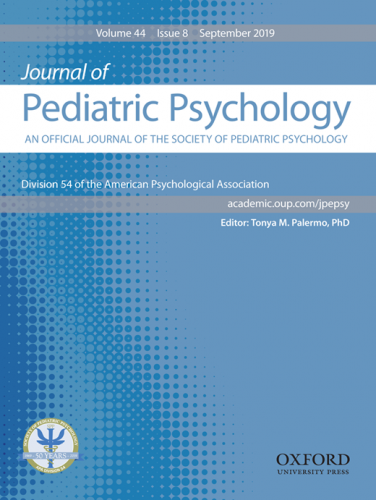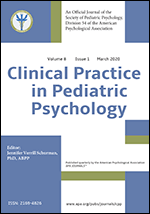Fact Sheet: Type 1 Diabetes Mellitus in Children and Adolescents
Type 1 diabetes mellitus (T1D) is a lifelong autoimmune disorder of glucose metabolism that destroys insulin-producing beta cells in the pancreas. Effective treatment requires insulin replacement via multiple daily injections (MDI) or an insulin pump, blood glucose monitoring, regulated carbohydrate intake and exercise, and active prevention or correction of abnormally high or low blood glucose levels.
Prevalence and Course
T1D affects about 1 in 500 U.S. children. The key factors that impact T1D outcomes include adequate T1D knowledge and self-management, a supportive and organized family environment, and effective T1D-related communication and problem-solving. It is known that the more time someone with T1D spends in a normal blood glucose range (i.e., 90-130 mg/dl before meals), the lower his/her risk is for both the onset and progression of long-term T1D-related complications.
Health and Psychosocial Consequences
Managing diabetes requires the child and parents to share responsibility and collaborate effectively on daily tasks. Youth with T1D are at elevated risk of depression, anxiety, disordered eating, and T1D-related distress. Youth are also at risk for harmful neurocognitive effects due to prolonged exposure to hyperglycemia or severe hypoglycemia. Youth with T1D who are suicidal could use insulin to intentionally induce hypoglycemia and harm themselves, warranting a more nuanced risk assessment for at risk youth.
Evidence-based Assessment
It is important to assess adherence and self-management behaviors (e.g., blood glucose monitoring, insulin dosing, diet/physical activity patterns) in addition to youth and parent psychosocial outcomes including family conflict/functioning, depression, anxiety, quality of life, peer relationships/school functioning and disease-specific outcomes (e.g., fear of hypoglycemia, risk-taking behaviors, disordered eating behaviors, distress). Diabetes care is best provided via a multidisciplinary team who can target the medical needs and the mental health of youth and their parents through initial screenings, ongoing assessment, and treatment.
Culture, Diversity, Demographic and Developmental Factors
Adolescents, racial/ethnic minorities, recent immigrants, economically disadvantaged families and single parents often struggle with T1D management leading to poorer T1D outcomes. Research also shows that there are racial and genetic differences in blood sugar metabolism. Specifically, research shows that glycated hemoglobin (HbA1c) levels in Black/African-American individuals may overestimate blood glucose concentrations by as much as 0.4% when compared to White peers. While the prevalence of T1D is highest in Non-Hispanic White youth, the incidence of T1D is increasing among Hispanic youth in the U.S. As youth enter adolescence and begin to take on more responsibility for T1D management, they may require more education and parent assistance to keep up with their T1D self-care. Adolescents transferring to adult T1D providers can benefit form support and resources to make a successful transfer.
Evidence-based Interventions
There have been rigorous randomized controlled trials of psychological interventions targeting youth coping skills and family-focused interventions targeting parent-youth teamwork, T1D-related communication, problem solving, and conflict resolution. Most of these trials have yielded stronger treatment effects on behavioral outcomes than on metabolic outcomes. More recently, several digital health interventions have shown preliminary efficacy, including studies employing video-based telehealth, mHealth, and web-based interventions.
Resources
Please see the SPP Diabetes SIG Resource Bank at: https://societyofpediatricpsychology.org/diabetes
- American Diabetes Association
- Centers for Disease Control and Prevention: Type 1 Diabetes
- Patient/Parent Resource: The Type 1 Diabetes Self-Care Manual: A Complete Guide to Type 1 Diabetes Across the Lifespan
- Patient/Parent Resource: Children with Diabetes
Authors: SPP Diabetes SIG Dissemination Committee: Jackie Papadakis, PhD, Aubrey Carpenter, PhD, and Jessica Parrish, PhD
Date of last update: December 2019
References
- American Diabetes Association. (2019). 13. Children and adolescents: Standards of Medical Care in Diabetes. Diabetes Care 42(Suppl 1), S148–S164
- Bergenstal, R. M., Gal, R. L., Connor, C. G., Gubitosi-Klug, R., Kruger, D., Olson, B. A., … Beck, R. W. (2017). Racial Differences in the Relationship of Glucose Concentrations and Hemoglobin A1c Levels. Annals of Internal Medicine, 167(2), 95. https://doi.org/10.7326/M16-2596
- Borschuck, A. P., & Everhert, R. S. (2015). Health disparities among youth with type 1 diabetes: A systematic review of the current literature. Families, Systems, & Health, 33(3) 297-313. doi: 10.1037/fsh0000134
- Chiang, J. L., Maahs, D. M., Garvey, K. C., Hood, K. K., Laffel, L. M., Weinzimer, S. A., … Schatz, D. (2018). Type 1 diabetes in children and adolescents: A position statement by the American Diabetes Association. Diabetes Care, 41(9), 2026-2044. doi: 10.2337/dci18-0023
- Delamater, A. M., de Wit, M., McDarby, V., Malik, J. A., Hilliard, M. E., Northam, E., & Acerini, C.L. (2018). ISPAD Clinical Practice Consensus Guidelines 2018: Psychological care of children and adolescents with type 1 diabetes. Pediatric Diabetes, 29(Suppl 27), 237-249. doi: 10.1111/pedi.12736.
- Driscoll, K. A., Raymond, J., Naranjo, D., & Patton, S. R. (2016). Fear of Hypoglycemia in Children and Adolescents and Their Parents with Type 1 Diabetes. Current Diabetes Reports, 16(8), 77. https://doi.org/10.1007/s11892-016-0762-2
- Hilliard, M. E., Eshtehardi, S. S., Minard, C. G., Wheat, S., Gunn, S., Sanders, C., … Anderson, B. J. (2019). Strengths-Based, Clinic-Integrated Nonrandomized Pilot Intervention to Promote Type 1 Diabetes Adherence and Well-Being. Journal of Pediatric Psychology, 44(1), 5–15. https://doi.org/10.1093/jpepsy/jsy051
- Hilliard, M. E., Powell, P. W., & Anderson, B. J. (2016). Evidence-based behavioral interventions to promote diabetes management in children, adolescents, and families. The American Psychologist, 71(7), 590–601. doi:10.1037/a0040359
- Marker, A.M., Monzon, A.D., Nelson, E.L., Clements, M.A., & Patton, S.R. (2019). An Intervention to Reduce Hypoglycemia Fear in Parents of Young Kids with Type 1 Diabetes via Video-Based Telemedicine (REDCHIP): Trial Design, Feasibility, and Acceptability. Diabetes Technology & Therapeutics. https://doi.org/10.1089/dia.2019.0244
- Mayer-Davis, E. J., Lawrence, J. M., Dabelea, D., Divers, J., Isom, S., Dolan, L., … Wagenknecht, L. (2017). Incidence Trends of Type 1 and Type 2 Diabetes among Youths, 2002–2012. New England Journal of Medicine, 376(15), 1419–1429. https://doi.org/10.1056/NEJMoa1610187
- Stanger, C., Lansing, A. H., Scherer, E., Budney, A., Christiano, A. S., & Casella, S. J. (2018). A Web-Delivered Multicomponent Intervention for Adolescents with Poorly Controlled Type 1 Diabetes: A Pilot Randomized Controlled Trial. Annals of Behavioral Medicine, 52(12), 1010–1022. https://doi.org/10.1093/abm/kay005
- Whittemore, R., Jaser, S., Chao, A., Jang, M., & Grey, M. (2012). Psychological Experience of Parents of Children With Type 1 Diabetes. The Diabetes Educator, 38(4), 562–579. https://doi.org/10.1177/0145721712445216



